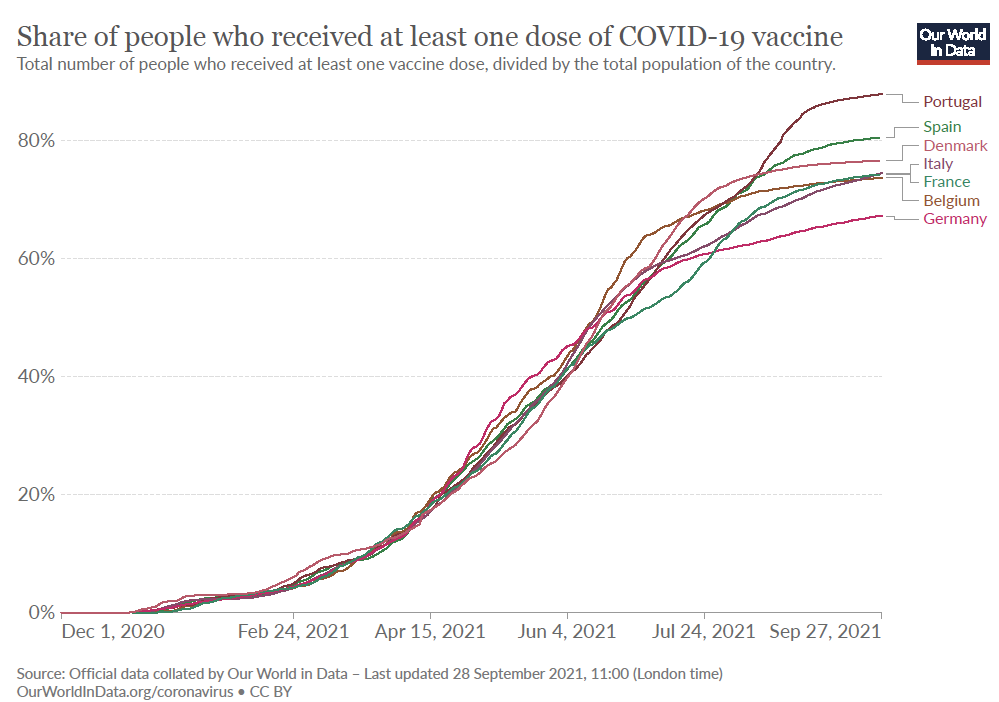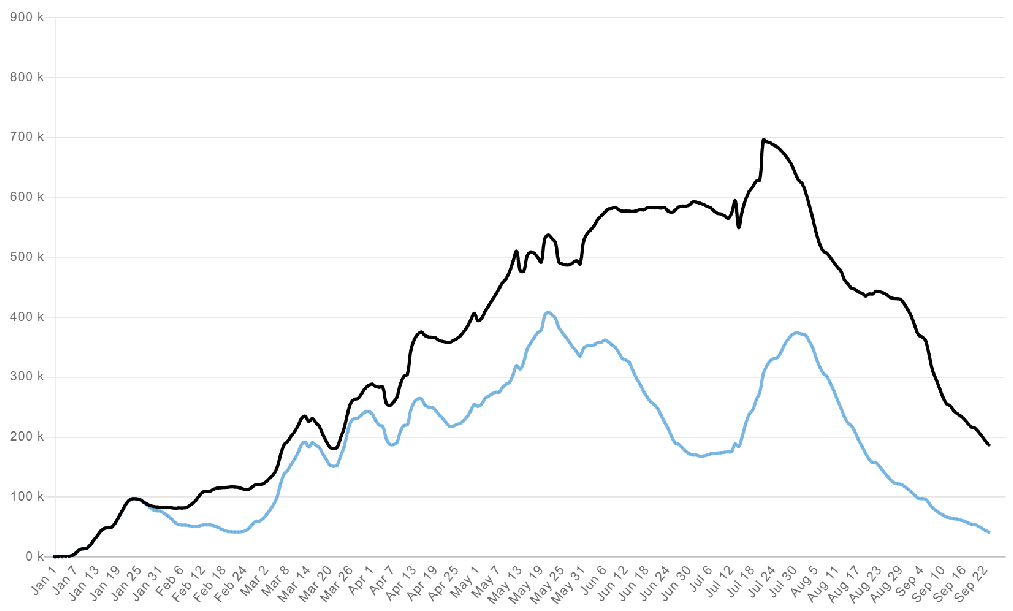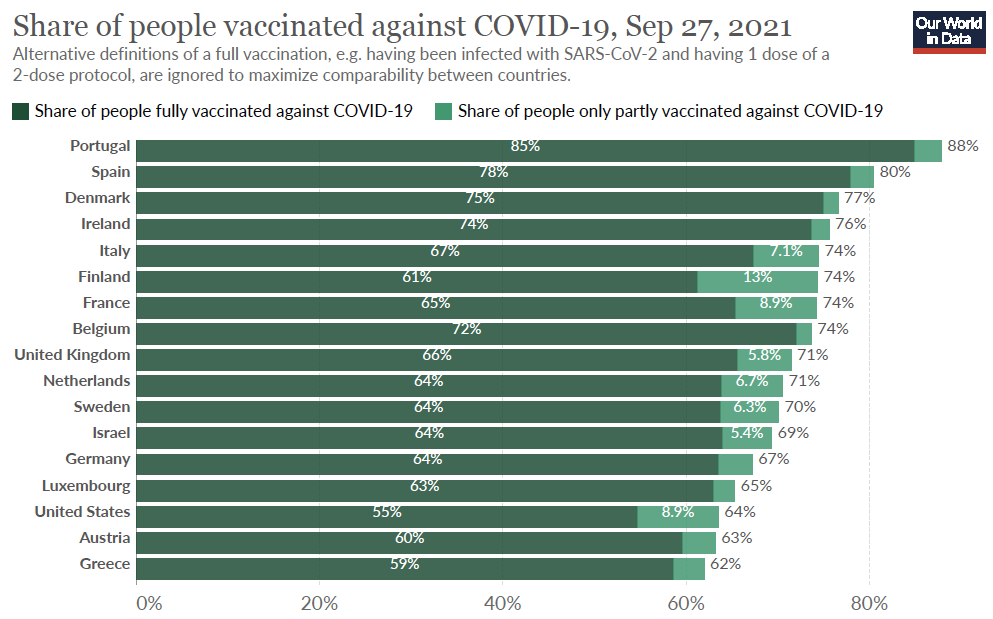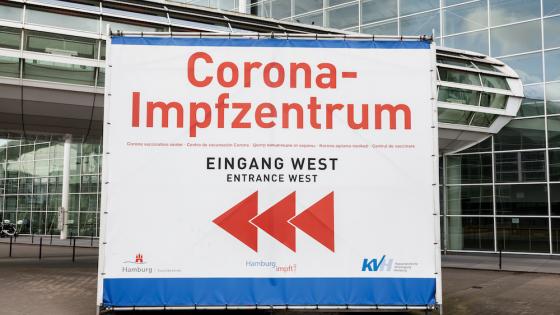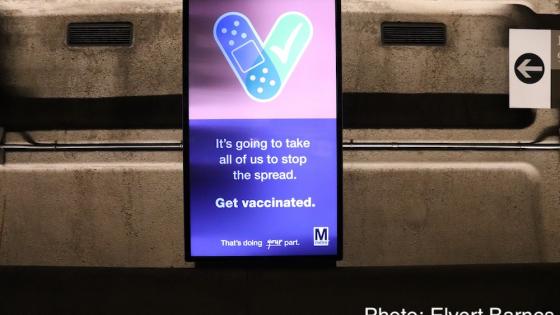Today, thanks to the approval of multiple effective covid vaccines in record time – which represents a huge success for our biomedical innovation ecosystem, especially in the US (Aghion et al. 2020) – the availability of vaccines and the logistics of delivery are no longer binding constraints for rich countries. Of course, the situation is hugely different in low-income countries, where only 2% of the population has received any vaccine dose, should be addressed decisively at the global level. Vaccines should be considered a global common good.
Rich countries still have a way to go, however. As we know, vaccines don’t save lives, vaccination does. In a new CEPR Policy Insight (Dewatripont 2021), I discuss the multiple hurdles for vaccination and lessons from the process so far. In this column I will focus on vaccine hesitancy, stressing that:
- The European Commission was criticised in the first months of 2021 for having insisted too much on low prices in their contractual negotiations with vaccine producers and not enough on speed of delivery, at a time when the opportunity cost of delaying the economic recovery was huge. This criticism is not unfair but, after a slower start than Israel, the UK and the US, the pace of vaccination has accelerated impressively.
- The advantage of centralised bargaining ensured equal access to vaccines among member states, and Figure 1 shows that, thanks to the Commission, vaccination rates rose with little variance across member states in the first five months of 2021 (I focus here on Western EU member states1 for the sake of comparability, and Figure 1 displays a diversity of situations among them, which we will detail below). The various countries managed to set up vaccine delivery systems with broadly similar efficiency. Maybe this is because supply was slow; it is not clear that all countries would have been as efficient as Israel if they had had a similarly rapid supply.
Addressing vaccine hesitancy/hostility
As Figure 1 shows, the variance in vaccination rates starts to increase when first doses start to slow down for some countries, at levels deemed insufficient. This has led to significant tensions in a number of countries around the idea of ‘corona passes’ documenting vaccination, recovery or a recent negative test. These were quickly introduced as a condition for crossing borders in the EU as an international tourist without much controversy, but their domestic extension has generated strong opposition to a ‘corona pass society’ accused of being synonymous with discrimination and polarising private enforcement. Nonetheless, a minority of countries required it quickly (Israel, Denmark) and many have since followed in one form or another (for events, culture, sports and hospitality venues).2
Figure 1
The controversy about corona passes has been intensified significantly because authorities in most rich countries initially stated two things that turned out to be contradictory: (1) vaccination should be a personal choice, and (2) we plan to reach ‘herd immunity’. The latter is not an exact number, but early on it was commonly set at a vaccination rate of 70% of the total population, based on the original virus. It is now significantly higher (up to 90%) given the delta variant.
It would have been more astute to say: “With limited vaccine supply and high uncertainty early on about side-effects of these new vaccines, we shall start with volunteers, to whom we are grateful, and we shall fine-tune the strategy along the way while trying to accommodate legitimate vaccine fears as much as possible”. It could be argued that stating (1) and (2) above, rather than this more cautious line, was maybe one of the most significant communication blunders in this crisis.
Statement (1) was, moreover, very surprising in a time of crisis when, for most of 2020, many individual rights had been constrained (thereby generating much inequality) in ways not seen since the end of World War II – the right to work, to be educated, to circulate, to meet in groups, and so on. Why did the ‘right not to be vaccinated’ have to be ‘sanctified’ so much instead of saying that the same cost-benefit analysis as for non-pharmaceutical interventions should be undertaken with vaccination? The (valid) criticisms of corona passes have to be weighed against the very high effectiveness of vaccines in terms of lives saved and their very small financial cost.
This being said, next to this communication blunder, the gradual strategy followed in the first half of 2021 also had clear merits. Interestingly, it echoes a 30-year-old debate on the transition from a centrally planned economic system to a market economy following the change of economic strategy in China after Mao’s death and in the former Soviet Union after the fall of the Berlin Wall. As argued in Dewatripont and Roland (1992, 1995), in an uncertain environment it is advantageous to start with ‘more efficient and popular’ policy measures, and thereby potentially build momentum for further reforms. This is what was done here – start by vaccinating more vulnerable individuals (whose benefit from vaccination is greater) and individuals eager to get vaccinated and then, if the vaccine turns out to be efficient and safe (which has been the case), build on this virtuous circle to vaccinate people who have gradually been convinced to do it. Psychologists and other scientists have documented through surveys this favourable evolution over time.3
But what should be done if one does not reach sufficient vaccination through mere ‘positive persuasion’? Aside from the objections mentioned above to corona passes, can we be confident that they work? What if unvaccinated people react negatively if one ‘reneges’ on their ‘vaccination freedom’? Survey evidence from psychologists and other scientists has shown a pretty robust contrast.4 While a majority of vaccinated people say they would approve of the introduction of corona passes, people who do not plan to get vaccinated say they would not. So, not only can these passes be divisive, they could potentially be counterproductive in terms of vaccination.
At the same time, this survey evidence relates to hypothetical situations. How confident can we be that actual individual choices will be consistent with survey answers? We are accumulating more and more actual experiences with corona passes. While rigorous scientific work is needed here, let us have a look at the evolution of vaccination rates across countries, with a special focus on the French experience.
France is potentially quite informative because the corona pass was announced solemnly on French TV by President Macron on 12 July with a well-defined timetable (it included a vaccination requirement for healthcare personnel, and a sanitary pass requirement in particular for cinemas and museums as of July 21 and hospitality venues as of 9 August).
International comparisons
The immediate impact of this announcement was a ‘vaccination appointment rush’, with almost one million appointments within 24 hours.5 This response was stronger than even the supporters of the pass had hoped for. Figure 2 shows a significant rebound of daily first doses, which changed the vaccination dynamics for weeks (first doses is the appropriate indicator at a time when the binding constraint is vaccine hesitancy and the key hurdle is convincing people to get their first dose).
Figure 2 Total daily doses (black) and daily first doses (blue)
While this evolution is impressive, not everybody was convinced. Every Saturday, multiple demonstrations are organised across France against corona passes, with a peak of over 200,000 participants in total and a gradual decline since. On the other hand, more than 13 million French people have decided to get vaccinated since 12 July.
Moreover, looking now at the geographical dimension and its evolution over time, Figures 3 and 4 indicate how France has risen spectacularly in the ‘vaccination ranking’ since 12 July. The figures compare the latest information to the 12 July numbers for the Western EU countries plus Israel, the UK and the US. The analysis is only suggestive and would be worth refining, but it is already quite instructive.
Figure 3
Figure 4
At least five conclusions emerge from this comparison of vaccination performances across this period.
1. Some countries ‘peaked early’: the UK, Israel and the Netherlands. These made up the top three on 12 July but fell significantly since.
2. The period has been good for France, whose vaccination rate rose from 54% to 74% and whose rank rose from 16th to 7th. It looks like a large part of this gain was due to the corona pass.
3. That being said, Spain also achieved an increase of 20 percentage points starting from a higher base, and this without a corona pass, which was decided by the government but blocked by courts.
4. The best performer by far is Portugal, with an increase of 27 percentage points in two and a half months, taking it ahead of second place by 8 percentage points.
5. A number of countries where the corona pass has been introduced are not impressive, including Germany, Austria and Luxembourg.
Research is needed to understand why the introduction of a corona pass has had a big impact in France but much less so in some other countries. One might hypothesise that its centralised, solemn introduction with a clear goal (75% of the population with a first dose by early September, a goal which wasn’t reached by that date but is about to be reached now) led to a big immediate response and a virtuous circle.
No ‘backlash’ has taken place. As Figure 5 shows, France started 2021 with 46.5% of its population unwilling to get vaccinated and was still at 35% by mid-June, but this number is now just below 20%. In contrast, Germany started 2021 with 30.7% of its population unwilling to get vaccinated but is now slightly higher than France at 22%.
Figure 5
Taking a broader view, it is interesting that, as of today, the Southern Latin countries – Portugal, Spain, Italy and France – have vaccination rates between 74% and 88%, higher than the Germanic countries – the Netherlands, Germany, Luxembourg and Austria – with rates between 63% and 71%.6 This stands in contrast with overall covid ‘performance’ so far. Total covid deaths per 100,000 inhabitants are currently between 175 and 217 for the Latin group and between 105 and 135 for the Germanic group. Maybe, vaccination progress can be linked to the summer flare-ups these Southern European countries have experienced, which naturally ‘focuses’ the minds of political authorities and increases vaccination willingness among the population.7
In any case, further research is needed, and is possible thanks to the wealth of data generated over the course of the year, to better understand the determinants of vaccination success. This will call for a multidimensional, and multidisciplinary, analysis.
References
Aghion, P, S Amaral-Garcia, M Dewatripont and M Goldman (2020), “How to strengthen European industries’ leadership in vaccine research and innovation”, VoxEU.org, 1 September .
de Figueiredo, A, H Larson and S Reicher (2021), “The potential impact of vaccine passports on inclination to accept COVID-19 vaccinations in the United Kingdom: evidence from a large cross-sectional survey and modelling study", EClinicalMedicine, 9 September, 101109.
Dewatripont, M (2021), “Vaccination strategies in the midst of an epidemic”, CEPR Policy Insight No 110.
Dewatripont, M and G Roland (1992), “The Virtues of Gradualism and Legitimacy in the Transition to a Market Economy”, Economic Journal 102: 291-300.
Dewatripont, M and G Roland (1995), “The Design of Reform Packages under Uncertainty”, American Economic Review 85: 1207-1223.
Endnotes
1 In other words, the pre-Eastern enlargement EU.
2 See https://www.euronews.com/travel/2021/07/26/green-pass-which-countries-in-europe-do-you-need-one-for.
3 See, for example, the Belgian Motivation Barometer series (https://motivationbarometer.com/fr/) and the Belgian Corona Study (https://www.uantwerpen.be/nl/projecten/coronastudie/) organised by the Universities of Antwerp and Hasselt.
4 See the Belgian Motivation Barometer and Belgian Corona Study, as well as de Figueiredo et al. (2021).
5 See https://www.liberation.fr/societe/sante/vaccination-tous-piques-de-doctolib-apres-les-annonces-de-macron-20210712_A7D33PZ4Y5HFPP6ZIW5TZLQZDA/
6 Belgium is an exception, with Flanders (but not our German-speaking community) being much more vaccinated than Wallonia (and even more so than Brussels, which is more French-speaking than Dutch-speaking).
7 Portugal’s stellar performance may be linked to the fact that, after a pretty good performance in 2020, it was hit by a massive wave of infections in early 2021 at a time where vaccination was starting, and it went for caution throughout 2021 (with an expanded use of the corona pass on 9 July). Finally, it has a weak antivax movement and a large political consensus on its covid strategy.

